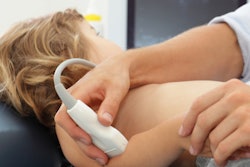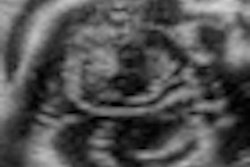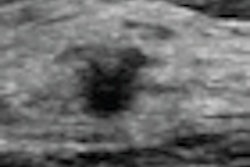Despite compelling clinical evidence and recommendations from a number of organizations, utilization of ultrasound to guide placement of central venous catheters still remains low, according to a recent presentation.
For that situation to change, efforts such as developing technology to lessen operator dependence, compiling better research data, and increasing the availability of training and competency evaluation need to take place, according to Dr. Christopher Moore, associate professor of emergency medicine at Yale University School of Medicine. Moore spoke at a forum in November 2012 sponsored by the American Institute of Ultrasound in Medicine (AIUM) in New York City.
"I strongly advocate for ultrasound first and always when you're putting needles in dangerous places," he said.
It's been estimated that more than 5 million central venous catheters are placed each year in the U.S., with an estimated mechanical complication rate ranging from 5% to 26% New England Journal of Medicine, March 20, 2003, Vol. 348:12, pp. 1123-1133). These complications include arterial puncture, cannulation, laceration, and pneumothorax, Moore said.
A meta-analysis published in 1996 found that real-time ultrasound guidance or Doppler guidance improves success rates and decreases the complications associated with internal jugular and subclavian venous catheter placement (Critical Care Medicine, December 1996, Vol. 24:12, pp. 2053-2058).
Fifteen years later, the American Society of Echocardiography and the Society of Cardiovascular Anesthesiologists published guidelines recommending that "properly trained clinicians use real-time ultrasound during [internal jugular] cannulation whenever possible to improve cannulation success and reduce the incidence of complications associated with the insertion of large-bore catheters" (Journal of the American Society of Echocardiography, December 2011, Vol. 24:12, pp. 1291-1318).
Other organizations such as the Agency for Healthcare Research and Quality, the National Institute for Health and Clinical Excellence in the U.K., the National Kidney Foundation's Kidney Disease Outcomes Quality Initiative, and the National Quality Forum have all recommended ultrasound guidance for placing central venous catheters, according to Moore.
And 19 organizations have been involved at some point in a collaborative effort to develop an AIUM-led statement on ultrasound guidance for vascular access, Moore said.
Despite government recommendations, however, utilization of ultrasound for central venous placement remains low (British Journal of Anaesthesia, September 14, 2007, Vol. 99:5, pp. 662-665; J Am Soc Echocardiogr, December 2011, Vol. 24:12, pp. 1291-1318).
"We know that this works, but [widespread adoption is] not happening," he said.
Ultrasound guidance for central venous catheter placement remains a user-dependent technology, and reports have come out about complications that have resulted from ultrasound guidance, he said.
"It takes time to really work with somebody and train them to do this correctly, so what I don't want to see is people having a false sense of security just because they have an ultrasound probe in their hand," Moore said.
A study published in 2010 found that simulation training led to improved in-hospital performance of ultrasound-guided central venous catheter insertion (Academic Medicine, September 2010, Vol. 85:9, pp. 1462-1469).
For ultrasound to be used first for central venous access, a few things need to happen, such as better data, Moore said.
"I think that will happen with meaningful use and e-quality measures," he said. In fact, avoiding the development of pneumothoraces as a complication for central venous access is specifically mentioned as a measure under an upcoming quality initiative from the U.S. Centers for Medicare and Medicaid Services.
Other beneficial developments in promoting ultrasound guidance would be the availability of simulated training and competency evaluation, as well as the development of a less user-dependent method, he said. Quality guidelines should also incorporate both adequate use and training.
It's also important to move this practice toward a legal standard of care, he said. Patients should also be involved and encouraged to ask questions, such as "Should you use ultrasound to guide this procedure?" and "Are you trained to use ultrasound for this procedure?"
Pressure to get reimbursement based on quality and outcomes should also be applied, Moore said.
"We're starting to see this happen, but this is a good example of why change is so slow in medicine," he said.



















